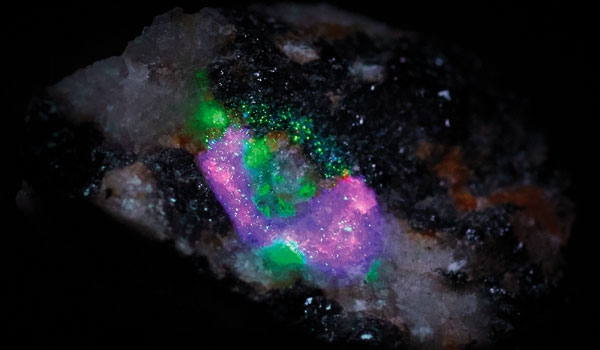Above:
Engineering model of the SHERLOC instrument undergoing tests in the laboratory.
SHERLOC
Looking for Life and Minerals with UV Light
Daniel Wilson
The Scanning Habitable Environments with Raman & Luminescence for Organics & Chemicals (SHERLOC) is an arm-mounted, Deep UV (DUV) resonance Raman and fluorescence spectrometer utilizing a 248.6-nm DUV laser and <100 micron spot size. SHERLOC enables non-contact, spatially resolved, highly sensitivity detection and characterization of organics and minerals in the Martian surface and near subsurface.
The instrument goals are to assess past aqueous history, detect the presence and preservation of potential biosignatures as well as to support selection of return samples. In support of SHERLOC, the MDL has electron-beam fabricated gratings for the Raman and fluorescence spectrometer. Not only does the grating have a very fine pitch, on the order of 200 nm, but the cross-section of the grooves is not square, but sinusoidal. The gratings have demonstrated near theoretical maximum diffraction efficiency at the 248.6 nm operating wavelength. Flight gratings have been fabricated, delivered and successfully tested.
Image taken by the SHERLOC instrument of a test target showing the variation of composition across the sample.
+ Larger image
Left: E-beam fabricated ultraviolet grating for Mars 2020 SHERLOC.
Right: A scanning electron microscope image of an e-beam-fabricated sinusoidal ultraviolet reflective grating for Mars 2020 SHERLOC.
+ Larger image




